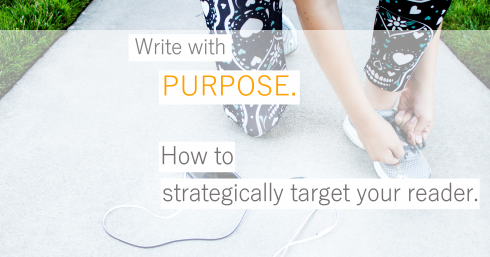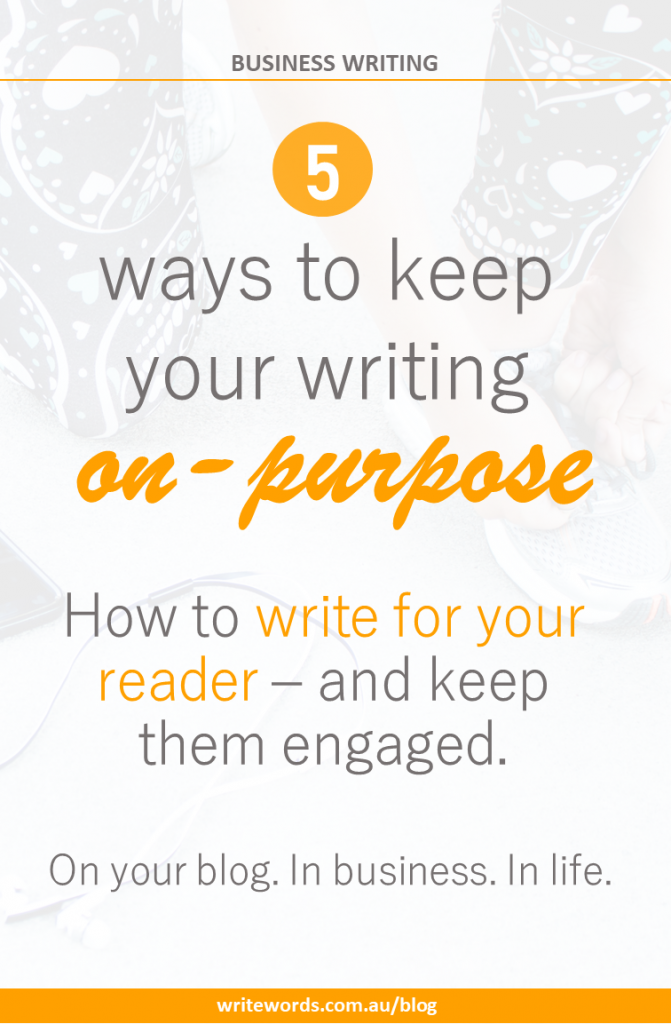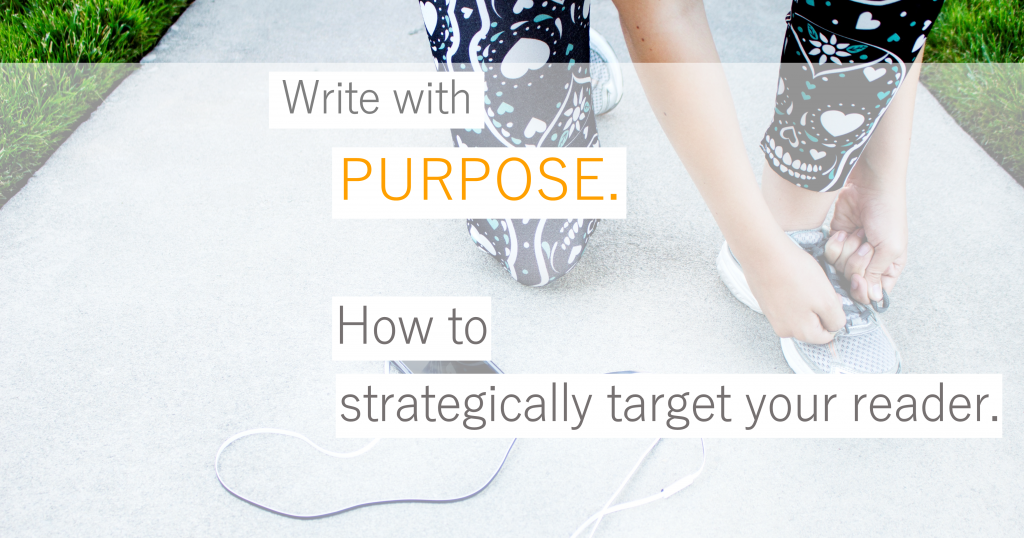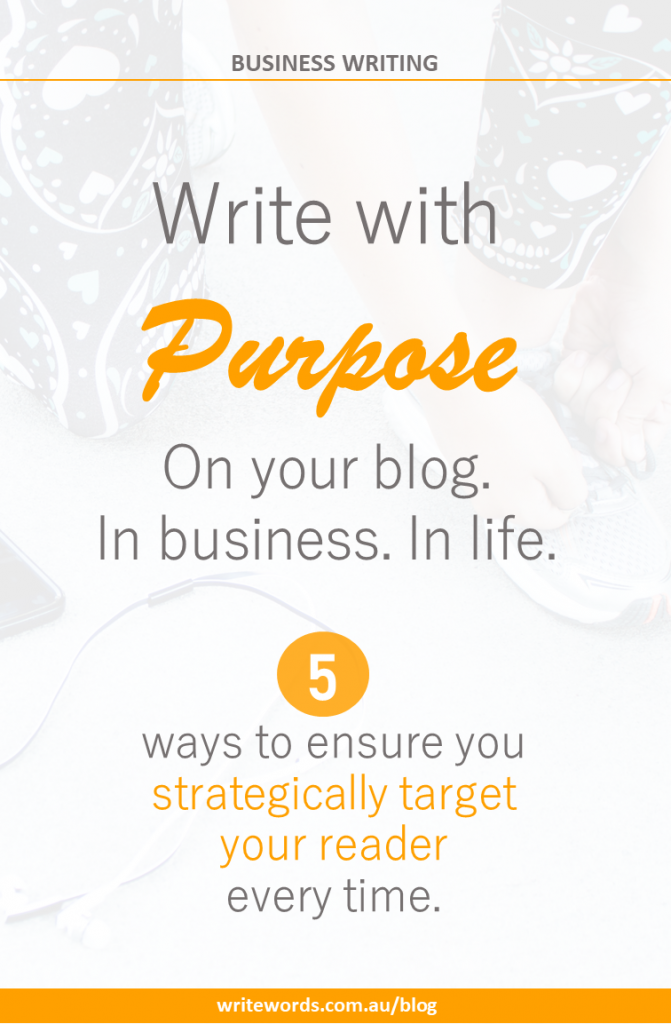5 ways to ensure you strategically target your reader every time
Why do you write? What’s your purpose?
Is it to acquire new clients? Convince your boss or clients to agree to your proposal? Enrich your readers’ or clients’ experience? Attract repeat business?

Whatever your purpose, it’s unlikely you write for the sake of it. You have a goal – a purpose.
So is the content, style and frequency of your written communication useful to your audience? Is it tailored to achieve your writing goal?
A communications – or writing – strategy ensures your reader remains engaged. You build a relationship of trust and loyalty – and communicate with the right people at the right time. Ultimately, you and your brand stay ‘top of mind’.
Regardless of how you do it – blog, email, letter, social media, brochure – every point of contact is an opportunity to bring the promises behind your brand to the forefront of your reader’s mind.
Your communications strategy need not be complex, so without further ado, here are my five essential elements for keeping your reader engaged and your writing on-purpose.
Do you write too many words?
Cut the clutter with the ‘Write Less, Say More’ cheat sheet
5 ways to keep your writing on-purpose
1. Your reader
With whom do you communicate (or want to communicate)? Once you have a clear understanding of your target audience, you can tailor your writing to suit their needs.
What do they need to know? This will impact what you write about.
How do they communicate? This will determine the medium, frequency and style of language used.
Learn more about targeting your audience.
2. Your content
What do you want to get across to your audience, and what do they need to know?
Is it what makes you unique, or why your reader should engage with you? Perhaps it’s how your reader can make the most of your service, or how they can improve their own skills.
Your messages should be crafted carefully and strategically. They need to reflect your brand – your values, your objectives and above all, have a purpose. They also need to be relevant to your reader – otherwise your reader will disengage and find something else to read. Worst case, they forget your request or unsubscribe.
3. Your style
Your ‘style’ of communication should reflect the personality of your brand and the needs of your reader.
Does your reader expect a formal, informal or persuasive edge to your writing? Is your product technical? Will your reader understand your terminology? And do you respect their knowledge?
A message that is clear and concise ensures you won’t lose your reader.
4. Consistency
Each time you ‘touch’ your reader, you communicate your brand, your ideas, your values.
It goes without saying that clients – or anyone else you’re trying to persuade – should be exposed to the same look-and-feel (design, colour, logo etc) each time contact is made, but consistency in language and messaging is also important. Readers should get the same feeling of confidence through every channel of communication.
A style guide can keep you focused on your key messages and language.
FREE MINI COURSE – write faster and with more confidence in 3 simple steps.
Watch now!
5. Timing
A successful writing strategy strikes that subtle balance that keeps you ‘top of mind’ without being annoying. It will nurture and sustain your relationship with your reader, and keep them engaged and interested in what you’re doing.
If you’re writing for clients, develop key messages and points of contact around a calendar of key dates that are relevant to your business and your audience. This may include a weekly newsletter, a bi-weekly blog post, a daily Twitter feed, an appeal to acquire supporters for a gala dinner, or Christmas cards.
Do you have any key communication dates throughout the year? Let us know in the comments, below!
Boost your writing skills
Join the WriteWell community and receive valuable resources that will improve your writing, including tips, cheat sheets and more. Here’s a taster:
- Write less, say more: Make more impact by writing fewer words
- Conversational writing: Why every writer should use contractions
- Captivate your readers: How to write compelling content
- The power of simplicity: How to keep even the most complex writing task simple
Receive more writing tips – free into your inbox. Join now!
Share the love!
Like this writing tip? Share it with your friends and colleagues.





Great article!
Thanks Yesim (better late than never, right?!). Hope you’re settling into the new role!